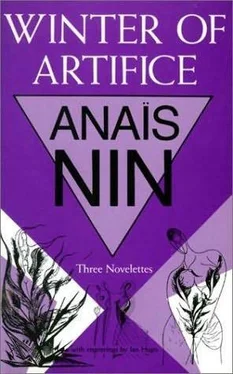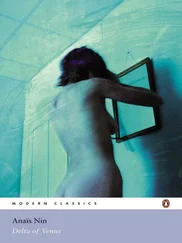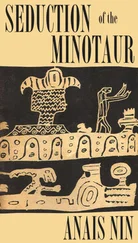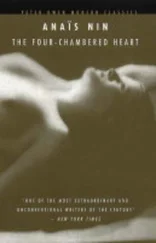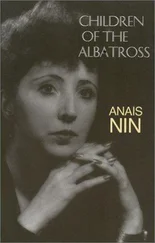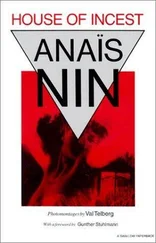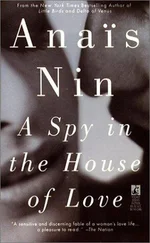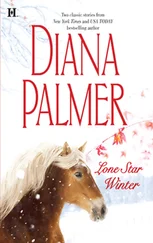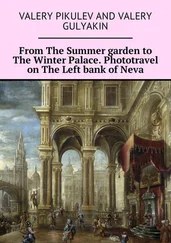Anaïs Nin - The Winter of Artifice
Здесь есть возможность читать онлайн «Anaïs Nin - The Winter of Artifice» весь текст электронной книги совершенно бесплатно (целиком полную версию без сокращений). В некоторых случаях можно слушать аудио, скачать через торрент в формате fb2 и присутствует краткое содержание. Год выпуска: 2007, Издательство: Sky Blue Press, Жанр: Классическая проза, на английском языке. Описание произведения, (предисловие) а так же отзывы посетителей доступны на портале библиотеки ЛибКат.
- Название:The Winter of Artifice
- Автор:
- Издательство:Sky Blue Press
- Жанр:
- Год:2007
- ISBN:нет данных
- Рейтинг книги:4 / 5. Голосов: 1
-
Избранное:Добавить в избранное
- Отзывы:
-
Ваша оценка:
- 80
- 1
- 2
- 3
- 4
- 5
The Winter of Artifice: краткое содержание, описание и аннотация
Предлагаем к чтению аннотацию, описание, краткое содержание или предисловие (зависит от того, что написал сам автор книги «The Winter of Artifice»). Если вы не нашли необходимую информацию о книге — напишите в комментариях, мы постараемся отыскать её.
“A handful of perfectly fold fables, and prose which is so daringly elaborate, so accurately timed… using words as magnificently colorful, evocative and imagist as any plastic combination on canvas but as mysteriously idiosyncratic as any abstract.”
—
The Winter of Artifice — читать онлайн бесплатно полную книгу (весь текст) целиком
Ниже представлен текст книги, разбитый по страницам. Система сохранения места последней прочитанной страницы, позволяет с удобством читать онлайн бесплатно книгу «The Winter of Artifice», без необходимости каждый раз заново искать на чём Вы остановились. Поставьте закладку, и сможете в любой момент перейти на страницу, на которой закончили чтение.
Интервал:
Закладка:
In the Castle there were twelve guest rooms. The rooms were richly furnished but with beds only. Each room had a different kind of bed. In the first one there was a luxurious four-postered bed with a silken canopy. In the second twin beds of rose-wood. In the third an immense crib of carved wood. In the fourth a small Russian crib lined with horse fur. In the fifth an Empire style bed with gold ornaments. A copper bed, and a bed of white fur. On the white fur bed she saw a beautiful fig split open with the red pulp looking like flesh. She touched it and it felt like the inside of a woman. A crime was committed in one of the rooms. Everyone was looking for the body. She knew where it was, but she would not tell. Some one spotted a line of blood along the wall. There was a violently bad odor, the smell of a cadaver.
Looking out of the window she saw a lake. There was a woman in an automobile riding over it, trying to land. But she drove into the wing of the wharf and could not free herself. Lilith reached out with her hand, took up the automobile, and laid it on the narrow sidewalk before the hotel. The woman was old and haggard. Lilith said to her: “Do you want some coffee?” She began to make coffee and the coffee pot grew immense—it boiled and sputtered and danced beyond her control. It was a huge factory grinding and smoking and boiling. The woman before Lilith is monstrous, paralyzed in a posture of agony. Hands contorted as if cut off at the wrist. Her legs are covered with blood-suckers. Everybody turns away from her, fainting with horror. Lilith did not want to hurt her feelings: she continued to look at her as if she were beautiful. The monster sprawled on the floor and stretched her swollen legs, saying: “I have six toes on each foot.” As Lilith looked at her she was aware that the monster’s eyes were piercing and divinatory. Lilith looked at her more fixedly, disregarding her ugliness. Then slowly the monster’s body straightened, her hands grasped Lilith softly, and she looked almost beautifulered wi<���…>
It was not a woman, but the Voice. And the Voice was knocking at her door. He stood there with his pulpy hat in his hand, entangled in his valises.
Neither her powers of illusion, nor her dreams, nor even the night itself had worked the miracle. He remained nothing but the Voice with a death-like breath.
Copyright
Derived from The Winter of Artifice: a facsimile of the original 1939 Paris edition
(c) 2007 Sky Blue Press
NOTES
1
The titles listed in this note — all published after Nin’s death — are arranged chronologically within categories. I cite only first editions. The volumes of Nin’s diary are Linotte: The Early Diary of Anaïs Nin, 1914-1920 , translated by Jean L. Sherman (New York: Harcourt Brace Jovanovich, 1978); The Diary of Anaïs Nin, 1966-1974 , edited by Gunther Stuhlmann (New York: Harcourt Brace Jovanovich, 1980); The Early Diary of Anaïs Nin, Volume Two, 1920-1923 (New York: Harcourt Brace Jovanovich, 1982); The Early Diary of Anaïs Nin, Volume Three, 1923-1927 (San Diego: Harcourt Brace Jovanovich, 1983); The Early Diary of Anaïs Nin, Volume Four, 1927-1931 (San Diego: Harcourt Brace Jovanovich, 1985); Henry and June: From the Unexpurgated Diary of Anaïs Nin (San Diego: Harcourt Brace Jovanovich, 1986); Incest: From a Journal of Love, the Unexpurgated Diary of Anaïs Nin, 1932-1934 (New York: Harcourt Brace Jovanovich, 1992); Fire: From a Journal of Love, the Unexpurgated Diary of Anaïs Nin, 1934-1937 (New York: Harcourt Brace, 1995); and Nearer the Moon: From a Journal of Love, the Unexpurgated Diary of Anaïs Nin, 1937-1939 (New York: Harcourt Brace, 1996). The volumes of letters are A Literate Passion: Letters of Anaïs Nin and Henry Miller, 1932-1953 , edited by Gunther Stuhlmann (San Diego: Harcourt Brace Jovanovich, 1987); Letters to a Friend in Australia (Melbourne: Nosukumo, 1992); and Arrows of Longing: The Correspondence between Anaïs Nin and Felix Pollak, 1952-1976 , edited by Gregory H. Mason (Athens: Swallow Press/Ohio University Press, 1998). The volumes of erotica are Delta of Venus (New York: Harcourt Brace Jovanovich, 1977) and Little Birds (New York: Harcourt Brace Jovanovich, 1979). The volumes with contents drawn from one or both of these books are The Illustrated Delta of Venus (London: W. H. Allen, 1980), with photographs by Bob Carlos Clarke; A Model and Other Stories (London: Penguin, 1995); Stories of Love (Ringwood, Victoria, Australia: Penguin, 1996); Fragments from the Delta of Venus (New York: powerHouse Books, 2004), with illustrations by Judy Chicago; and Artists and Models (London: Penguin, 2005). The collection of stories is Waste of Timelessness and Other Early Stories (Weston, CT: Magic Circle Press, 1977). The volume of erotica attributed to Nin and others is White Stains (London: Delectus Books, 1995).
The collections of Nin’s entirely or mostly previously published works are Portrait in Three Dimensions (N.p.: Concentric Circle Press, 1979); The White Blackbird and Other Writings (Santa Barbara: Capra Press, 1985); Conversations with Anaïs Nin , edited by Wendy M. DuBow (Jackson: University Press of Mississippi, 1994); and The Mystic of Sex and Other Writings , edited by Gunther Stuhlmann (Santa Barbara: Capra Press, 1995). The novella published separately is Stella (London: Phoenix, 1996).
The vast majority — almost all — of titles that were in print at the time of Nin’s death remains in print in late 2006: diaries, fiction, and criticism.
Pollak thought that Nin should republish The Winter of Artifice . In a 1960 letter to her, he writes, “I wonder whether you should not consider republishing now the original version of Winter — if someone like Grove Press would bring it out. It may make the stir it ought to make and bring financial rewards besides. Have you ever thought of it?” (Nin and Pollak 1998, 152). Nin responds only by saying, “Grove Press would never publish me” (154).
2
Excerpts from “Djuna” appear as “Hans and Johanna” in Nin 1989. They are from The Winter of Artifice , 9-13, 14-16, 16-18, 18-20, 24-26, 26-27, 34-35, 35-36, 39, 40, 49, 66, 67, 69-70, 74-76, 76-79, 82-83, 83-85, 85-89. In titling the excerpts “Hans and Johanna,” Gunther Stuhlmann, the editor of Anaïs: An International Journal , shifts focus from the narrator, as Nin has it with the title “Djuna,” to the objects of Djuna’s desire. The novella seems more about Djuna than Hans and Johanna.
The other editions of Winter of Artifice (with no definite article in the title and with contents different from those of The Winter of Artifice ) are N.p.: n.p., 1942 (the first publication of Nin’s own press, which became the Gemor Press); in Under a Glass Bell (London: Editions Poetry London, 1947); in Under a Glass Bell and Other Stories (New York: Dutton, 1948); Denver: Alan Swallow, 1961; London: Peter Owen, 1974 (with House of Incest ) and 1991 (without House of Incest ); and Athens: Swallow Press/Ohio University Press, 1992. Since 1961 in the United States, Winter of Artifice has been continuously in print, first with Alan Swallow in Denver, next with Swallow Press in Chicago, and then with Swallow Press/Ohio University Press in Athens. The novella published as “Lilith” in 1939 appears without title in the edition of 1942, as “Winter of Artifice” in that of 1947, as “Djuna” (entirely different from the “Djuna” in the 1939 edition) in that of 1948, and as “Winter of Artifice” in every later edition.
Читать дальшеИнтервал:
Закладка:
Похожие книги на «The Winter of Artifice»
Представляем Вашему вниманию похожие книги на «The Winter of Artifice» списком для выбора. Мы отобрали схожую по названию и смыслу литературу в надежде предоставить читателям больше вариантов отыскать новые, интересные, ещё непрочитанные произведения.
Обсуждение, отзывы о книге «The Winter of Artifice» и просто собственные мнения читателей. Оставьте ваши комментарии, напишите, что Вы думаете о произведении, его смысле или главных героях. Укажите что конкретно понравилось, а что нет, и почему Вы так считаете.
